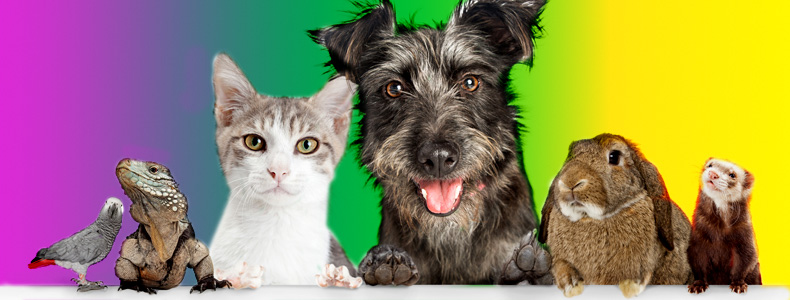Furry friends are great companions to grow up with. They are loving, loyal, and a source of happiness. It’s nice to have a pet around while raising children because you can give them responsibility by having them help look after one of the things they care about most. Though, like with most things, some precautions must be taken. Here are a few things you can do with your pets to create and maintain a safe environment between your pet and your children, as well as some guidelines to teach your children when it comes to their interaction with animals.
4 Things to Consider Doing with Your Pet:
-
Keep Them Healthy
Not only do you want to keep your pet healthy for the sake of wanting them to live a long, happy life, but for safety reasons as well. Many times when animals become injured or sick, their natural instinct is to try and protect themselves. This makes them more likely to get aggressive and bite which can scare or harm children.1
-
Socialize Them
Socializing them means having them around other dogs, pets, and humans.1 This way they get used to interacting with others who aren’t a part of their immediate family and everyday life. By doing this, you are preparing them to cope and deal with diverse situations better because they are used to thriving in more than one environment.
-
Train Them
Training pets not only keeps people safe, but also makes caring for them easier. It teaches them discipline which makes them more obedient. If you have them learn words such as ‘no’, you can stop and prohibit them from harmful or worrisome actions.
-
Don’t Leave Them Unattended with Your Children
While you can train them and socialize them with hopes of being able to trust they will be kind and gentle with your children, it’s best to take the extra precaution. Don’t leave your pets unattended around your children in case something goes wrong.1 This way you will be able to easily moderate or prevent accidents from happening.
8 Lessons to Consider Teaching your Children about Pets:
- Don’t approach pets you don’t know
- Don’t pull on ears or tails
- Don’t pinch or squeeze
- Don’t make loud noises next to them
- Don’t bother a pet when it’s eating or sleeping2
- Don’t try and get close to a pet when it’s with its babies
- For smaller animals, hold them from the bottom after lifting them up slowly
- Don’t go near pets who appear sick or injured3
As much as we hope others will take the same steps with their pets to ensure safety, we can’t guarantee they will. Because of this, it’s essential we teach children baseline rules for how they should approach and treat pets so they themselves can help in the prevention of harm and injury.
It can sometimes be nerve wrecking to have children around pets. It’s hard because they’re both your babies who you love very much. To create the safest and most stress free environment, socialize and train your pets as it is important they stay happy and healthy. You can also help create a positive situation by creating pet do’s and don’ts for your kids. When boundaries are established, pets can be a great addition to the family.
-
Scholastic, Animal Safety Tips, 2020
Categories: Child Safety Ages 4-11, Infant/Toddler Safety, Safety Tips
